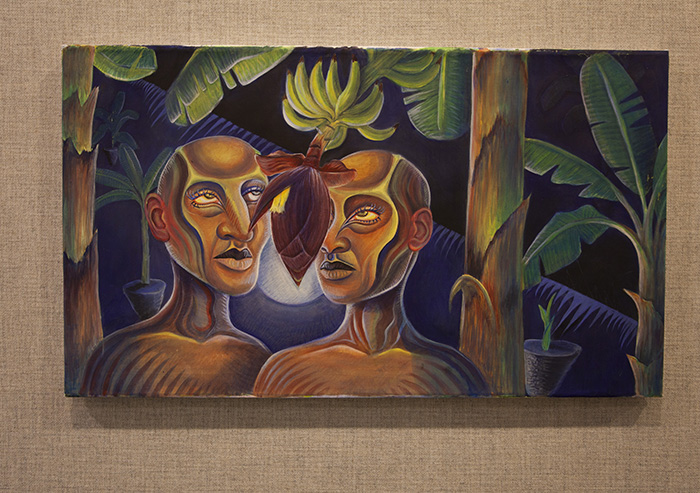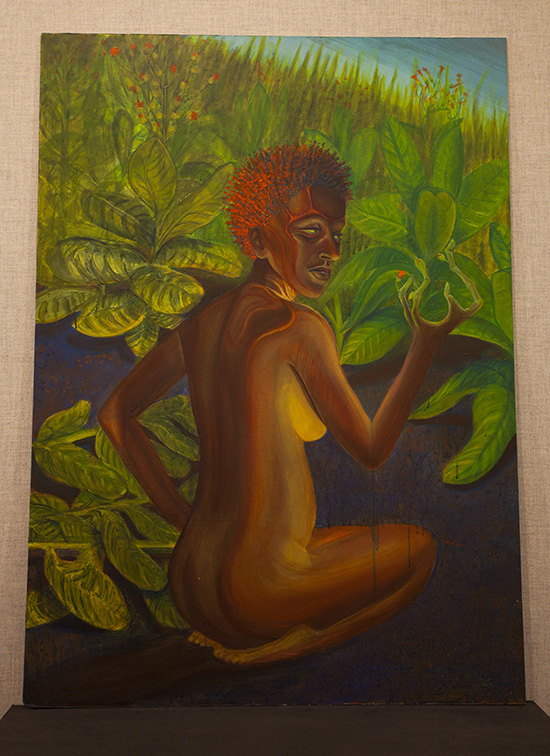Maxx Aguilar:
Maxx Aguilar
Media Arts & Sciences major
Maxx Aguilar is a product designer and multidisciplinary artist who works with a variety of media such as drawing, painting, printmaking, digital imaging, photography, music, metal working, and fashion design. They were born and raised in Chicago, land that has been part of the territories of Očhéthi Šakówiŋ, Myaamia, Bodwéwadmi (Potawatomi), Kaskaskia, Peoria, and Kiikaapoi (Kickapoo) nations since prior to European colonization. Their ancestry is inclusive of their maternal Black American heritage and paternal Panamanian family. In their work, their experience as a Black latine transgender person is a starting point for exploring themes of transformation and healing. By denouncing structures of the status quo, they are able to build worlds that reach forward toward the future while maintaining a historical awareness that navigates inherited trauma.
~.~
Inmaduro
acrylic on gessoed canvas
2021
Jewett Hallway Galleries
Nicotiana
acrylic on gessoed tempered masonite
2022
Jewett Hallway Galleries
In this body of work, spiritual unity across human and plant consciousness is illustrated by the theme of transformation. As described by African cosmology, all aspects of life have their own consciousness guided by forces of nature. Photosynthetic growth and the evolution of the figures are metaphors for spiritual alignment, healing, and Black transgender liberation. Through herbalism and ethnobotanical practices we are able to access healing and communicate with the natural world.
As the inflorescence of the plants grow, the figures intensely gaze at the budding genitalia as their own transformation takes place. Their gaze then becomes a growing sense of anticipation for the future, alluding to the experience of second puberty. An example of the figures' transformation is the hand in Nicotiana that has fingers branching off in a pattern similar to the growth structure of the Nicotiana species. These paintings are moments in time leading up to a final culmination where the figure and plant physically become one. This endpoint represents spiritual unity with the natural world and becoming one with God.
Black people exist under imposed structures of gender that were part of our ways of thinking prior to colonization and enslavement. Even the scientific language we use to describe and understand our environment is impacted by these structures. In this work, the process of liberation through transformation includes expanding gender and sex beyond the antiquated association with biology.
The figures are intentionally placed in monoculture settings to reference the reality of labor that clouds our historical relationship to the land. Black and brown populations have been forced to work the fields and practice unsustainable western agricultural practices in the name of efficiency and consumerism. We have been traumatized and brutalized through our relationships with the natural world, but the sacredness of these relationships shall be restored.
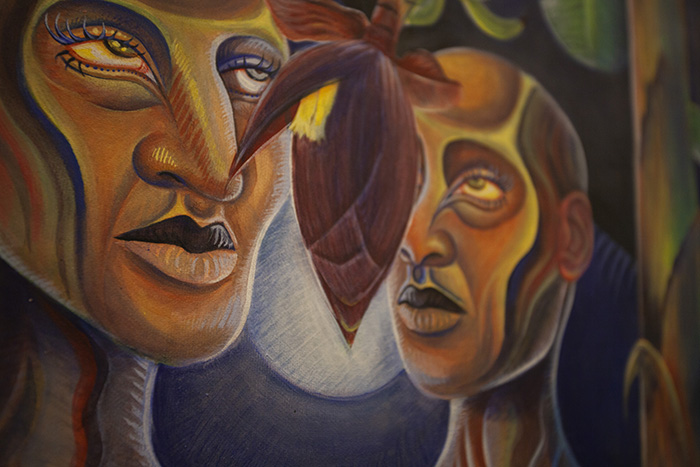
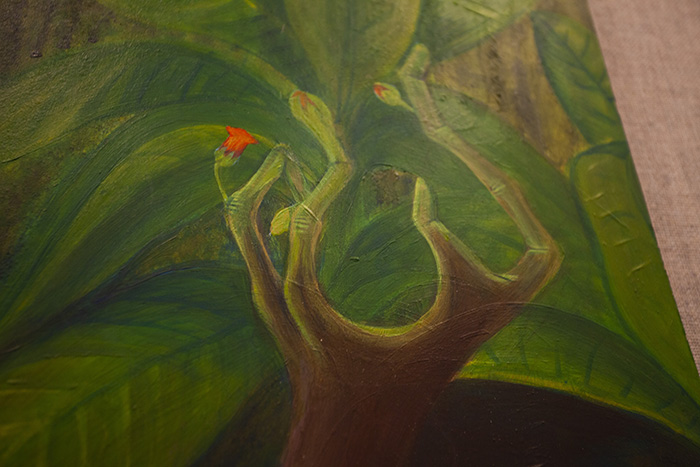
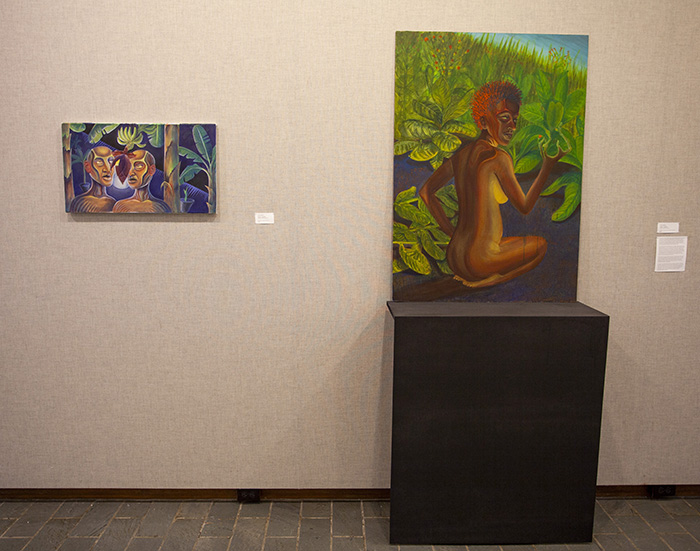
~.~


